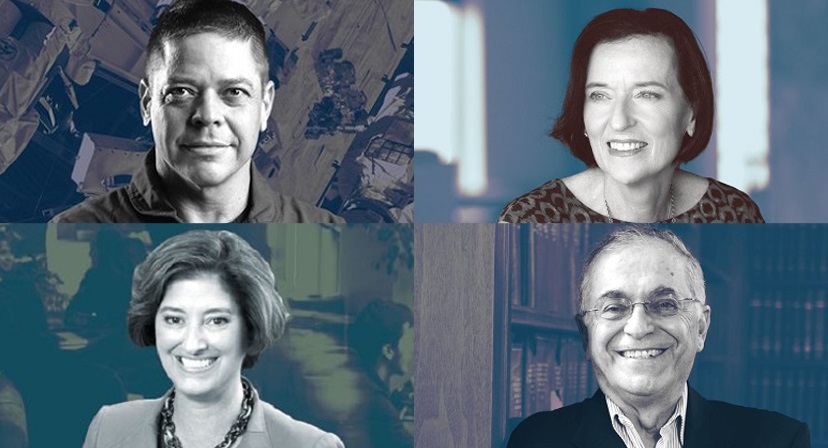
Caltech’s annual Distinguished Alumni Awards recognize “a particular achievement of noteworthy value, a series of such achievements, or a career of noteworthy accomplishment.” The 2021 luminaries include a veteran NASA astronaut who helped lead a revival of American spaceflight; a chemistry alumna who invests in humankind’s transition to sustainable energy sources; a former director of the Jet Propulsion Laboratory who oversaw decades of exploration; and a university president who traveled a winding path from expert on the composition of Mars to academic leader advancing research, education, and equity.
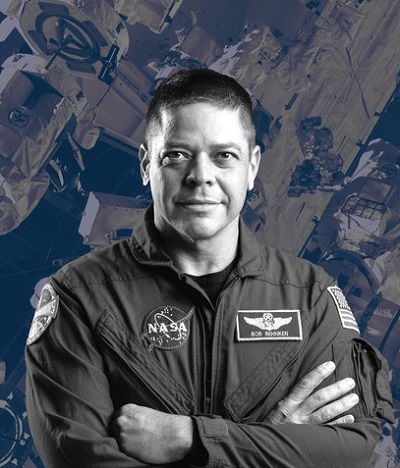
Robert Behnken (MS ’93, PhD ’97, Mechanical Engineering)
NASA Astronaut
For his accomplished career as an astronaut on three space missions, including his history-making journey in 2020 as part of the first crew to reach Earth orbit aboard a commercially developed and operated spacecraft, as well as for his work as a public advocate for science and engineering.
Air Force Colonel Robert Behnken’s third trip into space began long before blastoff. It started with the opportunity to help shape a historic mission.
Behnken co-led the 2020 mission aboard a SpaceX Crew Dragon capsule, which marked the first launch of astronauts from American soil since the 2011 retirement of the space shuttle. It was also the first time a commercially operated craft carried NASA astronauts to space. In the months leading up to the launch, Behnken worked with SpaceX engineers to make sure the Dragon was ready for the task.
“The technology is obviously a critical aspect, but often the people who fly on a spacecraft don’t have an opportunity to be involved in the design,” he says. “We were pretty lucky to be connected to the development process. Cultivating the science and engineering so that we can go forward and accomplish a mission is probably what I find the most rewarding out of everything I do.”
A Crew to Count On
With an aggregate of three months spent in orbit, Behnken has plenty of off-world experience. It helps that he serves alongside a cadre of colleagues he has come to know and trust. The 2020 crew included his best friend, Douglas Hurley. Behnken has also gone to space with good friends Michael Foreman, a crewmate on his first spaceflight, and Chris Cassidy, with whom Behnken shares the record for most spacewalks at 10. The camaraderie and hard-earned experience allow for a kind of shorthand between the astronauts.
“You find that these are people who you can work well with without much communication,” Behnken says. “You get to know what they’ll do in various situations. We know each other so well that I kind of take Doug and Mike with me whether they’re there or not. As we worked to stay coordinated leading up to our missions, this was definitely a huge plus.”
He and Hurley famously share more in common than career partnership and friendship. Both are married to fellow astronauts; Behnken’s spouse, Megan McArthur, was serving on the International Space Station at the time of this writing. In addition to his own skills and trusty crewmates, Behnken sees a boon to his work in the meticulous mindset he cultivated at Caltech.
Behnken came to Pasadena for his graduate studies as an early protégé of Richard Murray (BS ’85), who is now the Thomas E. and Doris Everhart Professor of Control and Dynamical Systems and Bioengineering and holder of the William K. Bowes Jr. Leadership Chair in the Division of Biology and Biological Engineering. In Murray’s research group, Behnken found a tight group of lab mates and a mentor who largely treated him as an equal. He also developed an engineer’s way of seeing the world.
“At Caltech, students have a healthy amount of cynicism, and I mean that in a positive way,” he says. “They ask, ‘Is this true? And do I really understand why it’s true or false?’ If you’re going to eventually fly on a new rocket ship into space, as I did, having healthy cynicism is probably in your best interest. It ensures safety.”
Inspiring Future Problem Solvers
Following graduation from Caltech, Behnken served in the Air Force Research Laboratory, then attended Test Pilot School. After a stint as an F-22 flight test engineer, he was selected for NASA’s 2000 class of astronauts, alongside future friend Hurley and wife-to-be McArthur.
Although much of Behnken’s life and career has centered on human spaceflight, his interest in the stars was stoked by uncrewed exploration, encapsulated in the images sent back by the Voyager probes from the solar system’s outer reaches. This breadth of interests informs his approach to youth outreach as he aims to encourage pursuits across STEM through his travels around the world to speak at schools and other organizations.
“I’m an advocate for challenging engineering problems,” he says. “Spaceflight is one, but I hope that it’s just one in a bigger puzzle that spurs people in the direction of science and engineering, and that sparking that interest makes a difference in some young people’s futures like it did for me.”
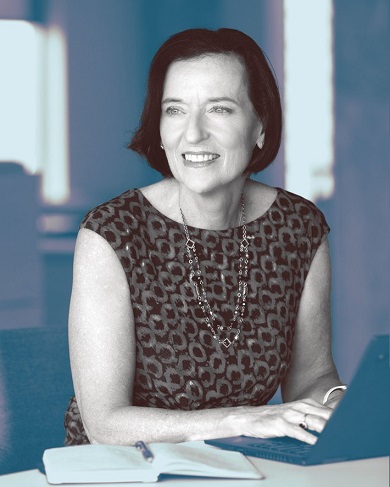
Barbara Burger (PhD ’87, Chemistry)
President of Technology Ventures and Vice President of Innovation, Chevron
For her long and extraordinary career as a business leader at Chevron, spanning roles in science and business, marketing, and investment; her contributions to advancements in the energy transition; and for her prominent role as a mentor and advocate for women in science and business.
Early in her career at Chevron, Barbara Burger happened upon an internal posting for a technical specialist in aviation. A chemist by training, she had no experience in aerospace engineering. Nevertheless, she interviewed for, and secured, the job.
“I always say, ‘If I have all the experience you’re looking for, why do I want the job?’” she notes. “I’m at my best when I’m learning.’ I have such breadth in my career because I haven’t been afraid to go into places where I don’t know everything.”
The intellectual drive and confidence to pursue an unexpected path derives from Burger’s Caltech education, and it continues to lead her to new challenges. Now, as Chevron vice president of innovation and president of Chevron Technology Ventures, she helps Chevron access external innovation and lead in the transition to a lower-carbon future. Meanwhile, her philanthropic contributions to Caltech aim to help women in chemistry who want to follow the pathways of their own curiosity, just as she did.
Community is Key
Burger had her choice of graduate programs after graduating with a BS from the University of Rochester. Along with a change of scenery, Caltech offered her a place a community of scholars that yielded durable connections. She still visits mentor John Bercaw, now Centennial Professor of Chemistry, Emeritus, whenever she is back on campus. A cohort of peers remain close friends: Nancy Doherty (PhD ’84), Janet Marshall (PhD ’87), and Leigh Maier (PhD ’88). “It’s a group of people I’ve known my whole career even though we went different places,” she says.
After graduation, Burger started work as a research chemist at Chevron. The years ahead would see her managing disparate areas within the company, from international marketing to chemicals and supply chains, all in disparate locales such as the Bay Area, Houston, and London.
In 2013, Burger began the work she continues today at Chevron Technology Ventures, the longest-operating corporate venture capital firm in the sector. Her team includes experts in a variety of fields, and the nature of her role requires that she get up to speed on work at the frontiers of an array of disciplines.
Burger also must reconcile a divergence of scales. The technologies she invests in generally start with small operations, and Chevron is large. But the magnitude of the energy-transition challenge calls for all hands on deck.
“I’m working with Davids, and I’m employed by Goliath,” Burger says. “We know that story doesn’t come out so good for one of them.”
In her vision, however, firms large and small work together because partnership is essential for tackling the grand challenges of climate change.
“Transitioning to a lower carbon energy system a big, gnarly problem, and if we get it wrong, some communities will be disadvantaged more than others,” she says. “When I’m done, hopefully we’ll have planted some seeds and established some good momentum.”
A Philanthropic Focus
Giving back has always been part of Burger’s ethos, but it took on a greater importance in her life following a tremendously difficult loss: her husband, Chevron chemical engineer Ed Brown, died of cancer when she was 44. In the wake of Brown’s death, Burger doubled down on efforts to make a difference in the lives of others with mentorship and philanthropy.
“It gave me purpose,” Burger says. “You realize, you can do anything you want, but you just have to decide what it is. Giving for students has come out of that.”
In addition to scholarships at her undergraduate alma mater and the high school her husband attended, she endowed a set of resources in 2019 for women at Caltech, including a fellowship for doctoral students in chemistry aspiring to nonacademic careers.
In addition to endowing them with financial backing, Burger enjoys getting to know the fellows and providing both career guidance and important introductions.
As a chemist, she says, “I’m a big believer in catalysts. You want somebody who has a lot of potential to have that little catalyst to help them get started.”
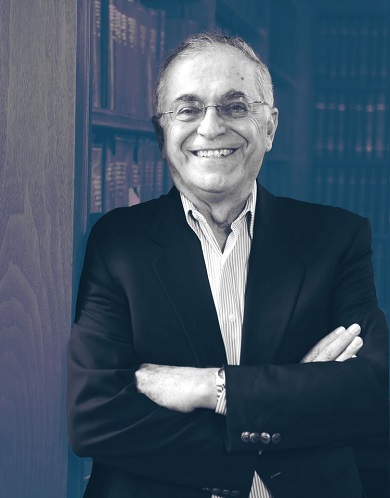
Charles Elachi (MS ’69, PhD ’71, Electrical Engineering)
Professor Emeritus of Electrical Engineering and Planetary Science, Caltech
For his distinguished leadership in space exploration and planetary science as the longtime director of the Jet Propulsion Laboratory (JPL), where he was instrumental to realizing missions across the solar system including our own planet Earth, and for his many contributions helping to map out NASA’s long-term scientific future.
When Charles Elachi was growing up in a small village in Lebanon, he would often look up at the stars, awestruck.
“I was always fascinated,” he says. “I used to wonder, ‘Could there be somebody out there looking back at our planet?’”
That boy could not have known the pivotal role he would play in promoting space exploration and deepening our understanding of the earth. In a 45-year career at JPL, which Caltech manages on behalf of NASA, Elachi developed innovative space-based radar systems and rose through the ranks to serve as director for 15 years. In that capacity, he oversaw 25 successful missions that reached the edge of our solar system and peered out farther still.
However, when he first became aware of Caltech, during his final year at the University of Grenoble in France, Elachi had a slightly less luminous type of star on his mind.
“I looked at Pasadena on the map and next to it said ‘Hollywood,’” Elachi laughs. “I decided to come to Caltech not because it was the best school in the world, but because it’s near Hollywood. Fortunately, it’s also the best school in the world.”
“Dare Mighty Things”
Elachi’s electrical engineering studies at Caltech led him to work at JPL in the summer of 1969, and he secured a full-time position at the Lab upon earning his PhD. An early coup in his long tenure came when NASA began to plan its first space shuttle missions. Elachi’s radar system for surveying Earth’s surface was chosen to be the payload on the shuttle’s second flight.
The instrument produced rich data not only for the study of Earth science but also for archaeology, penetrating meters into the sands of Egypt to reveal ancient undiscovered drainage channels, a major find.
Elachi ascended JPL’s ranks during the ’80s and ’90s, with his responsibilities expanding to encompass instrumentation, mission planning, and scientific investigation. Finally, in 2001, he was named JPL director, where he would play a key role in setting NASA’s course for the coming millennium.
Elachi sought to imbue the Lab’s activities with the intrepid spirit exemplified by one of his historical heroes, Theodore Roosevelt, adopting an axiom of Roosevelt’s as JPL’s motto: “Dare mighty things.” The “mighty things” JPL dared during Elachi’s tenure included landing three rovers on Mars; launching powerful space telescopes for examining distant stars, black holes, and exoplanets; and sending satellites into orbit that probe Earth’s gravity and climate system. According to Elachi, a pioneering spirit and the willingness to face down failure are key to JPL’s success.
“Anytime you’re doing exploration, you cannot do things in the routine way,” he says. “I used to tell people, ‘The crazier it is, the more interested we are in the idea.’ Maybe only one out of 10 works. But that’s fine. That’s how you move ahead.”
Some crazy ideas start at the top. For instance, Elachi had a jolt of inspiration after attending a 2013 talk by an expert on drones. He wondered: Could JPL fly a drone on Mars? There was some reluctance to add a new element to the then fully designed Perseverance rover. But inventive, persistent engineers brought the idea to life. At the time of writing, the Ingenuity helicopter had made 12 flights on the Red Planet.
“That’s the thing I love about JPL: nothing is impossible,” Elachi says. “This was a Wright brothers moment, something that had never been done before.”
Close to Home
For his engineering accomplishments and space science leadership, Elachi has earned dozens of awards, medals, and honorary degrees, including induction into the National Academy of Engineering at age 42. He counts a few honors as closest to his heart: his inclusion in France’s Legion of Honor and his native Lebanon’s National Order of the Cedar are near the top, joined now by this award from Caltech.
“The Distinguished Alumni Award means a lot for me,” he says. “I mean, I love Caltech. This has been my home for the last 52 years, so I was very touched.”
Elachi remains busy following his retirement from JPL in 2016. He half jokes that switching to emeritus status has shortened his work week from 70 hours to 40. He uses the extra time to manage large research projects and mentor students and postdocs. Now, however, he has more time to spend with his family. When his grandchildren visit, they sometimes join him in looking up at the stars.
“I see the amazement in their eyes,” he says. “It brings me right back. I still feel the amazement of that young kid.”
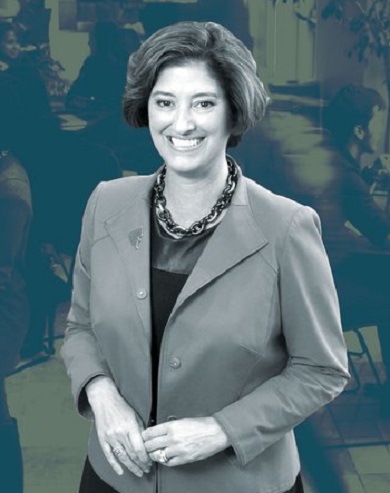
Laurie Leshin (MS ’89, PhD ’95, Geochemistry)
President, Worcester Polytechnic Institute (WPI)
For her barrier-breaking leadership at universities such as Worcester Polytechnic Institute, which has been recognized for both teaching and research excellence and essential strides in diversity, equity, and inclusion under her guidance as the first woman to serve as president; and for her accomplishments as a distinguished geochemist and space scientist.
Not long after Laurie Leshin became Worcester Polytechnic Institute’s first female president in 2014, the Wall Street Journal/Times Higher Education College Rankings recognized WPI as the university that best balances teaching excellence with groundbreaking research. That success starts with amplifying the school’s longtime focus on project-based learning: off-campus experiences wherein students learn, and apply that learning, to address real-life issues that affect people’s lives.
“If you want students to change the world, you have to teach them how,” says Leshin. “We send them out into the world, give them hard problems to solve, and guide them along the way.”
In recent years, student projects have tackled the improvement of STEM education in eastern Ghana, sanitation in Bangkok, and public transport in Moscow.
“It’s almost a moral imperative that we scale the program up,” she says of the effort known as the Global Projects Program.
During Leshin’s tenure as president, student participation in the program, which connects diverse teams of undergraduates and their faculty mentors with project centers across six continents, has grown from 60 percent to 90 percent. The seven-week course is dedicated to helping solve a host of problems at the intersection of society and technology.
Leshin credits her time at Caltech for refining her focus, dedication, and tenacity, which she points to as necessary for taking on hard problems. “It has much to do with my Caltech training,” she says. “It becomes your lens to the world.”
On Campus, On Mars
Her journey in science started with a few grainy pictures from another planet. As a 10-year-old, Leshin saw pictures taken by the Viking landers of the 1970s, which were beamed back from the surface of Mars. The arid scenery felt familiar, an echo of her hometown of Tempe, Arizona.
“That desert landscape really spoke to me,” she says. “I just wanted to reach out and touch those rocks.”
Her connection with Mars echoed throughout Leshin’s undergraduate years at Arizona State University (ASU). As a NASA intern, she worked with data from the Viking mission in her first research project at age 19. Mulling her graduate school options later, she deemed Caltech the clear choice.
“What won me over was meeting the other graduate students,” she says. “They clearly worked hard, but they had also built strong bonds and were just brilliant. I was excited to be part of that group.”
Two Caltech advisers also had a lasting influence on Leshin: the late Sam Epstein, the William E. Leonhard Professor of Geochemistry, Emeritus; and Edward Stolper, Distinguished Professor of Geology.
Dual avenues of space exploration and the improvement of education would come to define Leshin’s career. In 2004, while at her first faculty position at ASU, she was appointed to the President’s Commission on Implementation of United States Space Exploration Policy, where fellow 2021 Distinguished Alumni Award winner and former JPL director Charles Elachi proved a generous mentor.
The following year, NASA challenged Leshin to help manage the implementation of that commission’s recommendations at Goddard Space Flight Center. By 2010, she was deputy associate administrator for the Exploration Systems Mission Directorate, where she oversaw multibillion-dollar projects with a workforce numbering over 1,000 across a broad array of specialties.
Missing university life after six years at NASA, Leshin became a dean at Rensselaer Polytechnic Institute in New York. An overlap with the Mars Science Laboratory’s calendar for the first three months saw her splitting time, literally: one week on an Earth schedule on campus alternating with one week on erratic Mars time helping operate the Curiosity rover at JPL, which Caltech manages for NASA.
“It felt like I didn’t sleep,” she remembers. “But it was awesome because I was able to stay involved in the research even as I was leading the School of Science at Rensselaer.”
The Mission Continues
Since becoming president of WPI, Leshin has prioritized not only excellence in research and education but also diversity, equity, and inclusion. WPI now has one of the highest percentages of female undergraduates among STEM institutions, and the National Institutes of Health recently honored the university for enhancing faculty gender diversity.
“About a year in as president at WPI, a colleague said, ‘I figured you out: you approach this job like a scientist,” she recalls. “‘You’re basically making hypotheses and testing them all the time, getting data, then pivoting and making decisions.’”
Although proud of her accomplishments, Leshin notes there remains much to be done, especially to bring underrepresented people into STEM. With the world facing manifest difficulties, a waste of potential is a detriment to all, she believes.
“There are thorny problems, whether it’s climate change or global health, food security or cybersecurity,” she says. “We need all the brains we can get working on this stuff.”












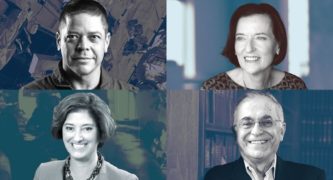

 0 comments
0 comments


